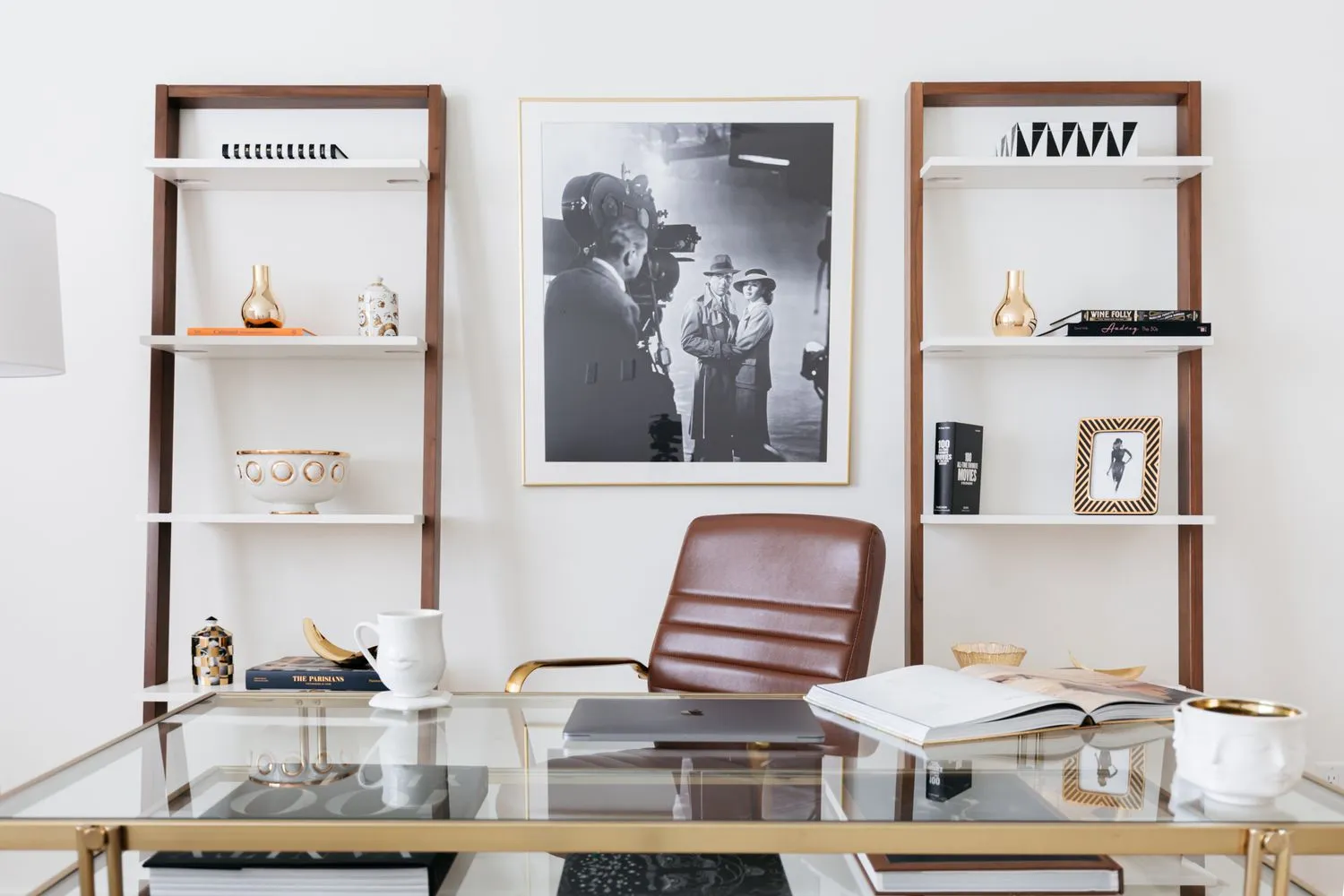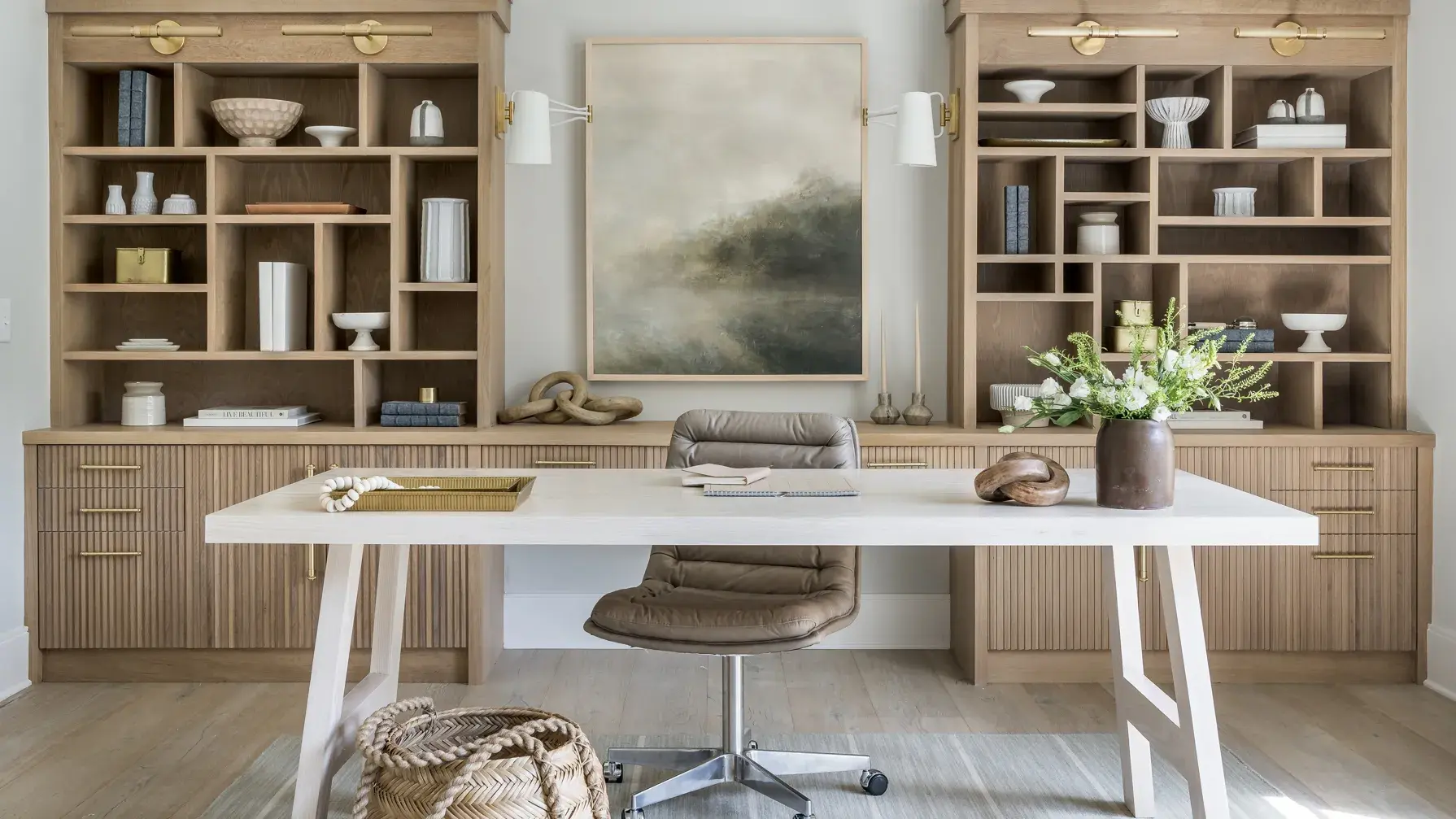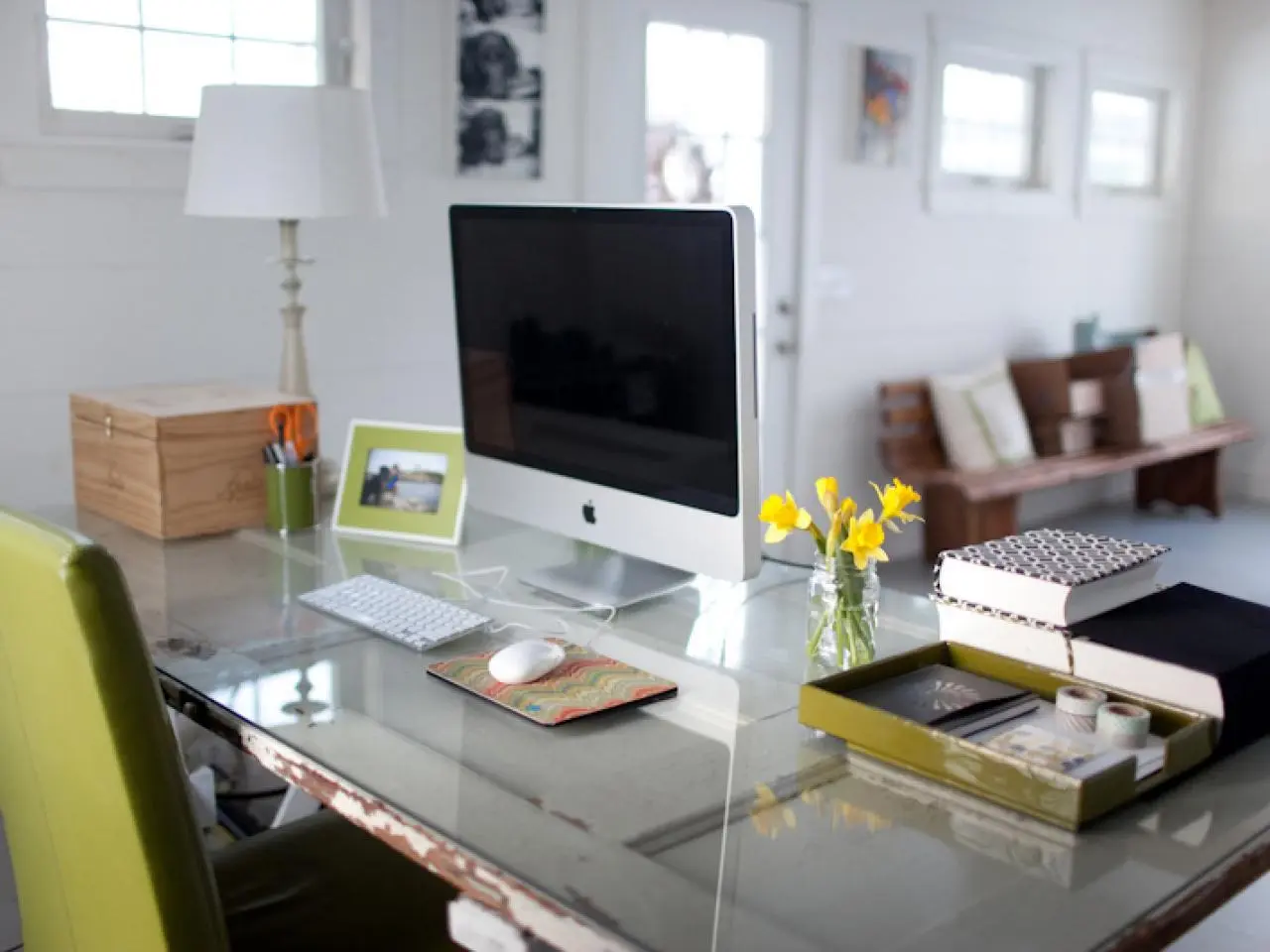Home Office Mastery: Supercharge Your Productivity

Working from home has become the new norm for many professionals. However, without a well-organized home office, it can be challenging to stay productive and focused. If you’re struggling to stay organized in your remote work environment, we’ve got you covered. In this article, we will explore practical and effective ideas for organizing your home office, helping you create a space that promotes efficiency and minimizes distractions.
The Importance of an Organized Home Office
An organized home office is essential for maintaining productivity and focus. When your workspace is cluttered and disorganized, it can be difficult to find important documents, locate supplies, and stay on top of tasks. By implementing effective organization strategies, you can create a clean and functional workspace that allows you to work efficiently and effectively.
One of the key benefits of an organized home office is the ability to minimize distractions. When your desk is clutter-free and everything has its designated place, you can eliminate visual distractions that can hinder your concentration. Additionally, an organized workspace can reduce stress and promote a sense of calm, allowing you to approach your work with a clear and focused mind.
Creating an organized home office is not just about aesthetics; it’s about optimizing your workflow and creating an environment that supports your work style. With that in mind, let’s dive into some practical ideas for organizing your home office.

Assessing Your Needs and Creating a Functional Workspace
Before diving into the physical organization of your home office, it’s important to assess your needs and create a functional workspace. Consider the type of work you do and the tools and equipment you require. Do you need a large desk for spreading out documents, or do you primarily work on a computer? Understanding your work style and requirements will help you determine the layout and furniture needed for your home office.
Once you have a clear understanding of your needs, it’s time to create a functional workspace. Start by positioning your desk in a way that maximizes natural light, as this can boost your mood and energy levels. Ensure that your desk is at a comfortable height and that your chair provides proper support for your back.
In addition to your desk and chair, consider the other elements you may need in your home office. This could include shelves for storage, a printer stand, or a whiteboard for jotting down ideas. By carefully planning and setting up your linetogel workspace, you can create an environment that supports your productivity and enhances your work experience.
Decluttering and Organizing Your Physical Space
Now that you have a functional workspace, it’s time to tackle the clutter. Decluttering is an essential step in creating an organized home office. Start by removing any unnecessary items from your desk and workspace. Get rid of old documents, broken supplies, and anything else that no longer serves a purpose.
Once you have decluttered your desk, it’s time to organize the remaining items. Use desk organizers and trays to group similar items together. For example, keep pens, pencils, and other writing utensils in a designated container. Use drawer dividers to separate and organize your office supplies, such as paper clips, sticky notes, and binder clips.
In addition to organizing your desk, consider implementing storage solutions for larger items. Shelves, cabinets, and file cabinets can help you store books, reference materials, and other items you don’t need on a daily basis. Utilize clear bins or boxes to store items that are not frequently used but still need to be easily accessible.
By decluttering and organizing your physical space, you can create a streamlined and efficient workspace that allows you to focus on your work without distractions.
Maximizing Storage and Utilizing Vertical Space
When it comes to organizing a home office, maximizing storage is essential. Make use of every inch of available space, including vertical space. Install shelves or floating wall-mounted shelves to store books, binders, and decorative items. Utilize wall-mounted organizers or pegboards to hang frequently used tools and supplies, such as scissors, tape, and rulers.
If you have limited floor space, consider using multi-functional furniture that provides storage options. Look for desks with built-in drawers or shelves, or consider adding a small filing cabinet that can double as a side table.
Another great way to maximize storage is by investing in storage containers and bins that can fit under your desk or on shelves. These containers can hold items like cables, power cords, and other office accessories, keeping them organized and out of sight.
By utilizing vertical space and maximizing storage options, you can create a home office that is both functional and visually appealing.
Creating a Filing System for Important Documents
A filing system is crucial for organizing important documents in your home office. Without a proper system in place, it’s easy to misplace or lose important paperwork. Creating a filing system will not only help you stay organized but also save you time when you need to locate specific documents.
Start by gathering all your documents and sorting them into categories. This could include categories like financial documents, client information, contracts, and project files. Once you have sorted your documents, invest in a filing cabinet or file folders to store them in an organized manner.
Label each folder or drawer with clear and descriptive names, making it easy to locate documents when needed. Consider color-coding your files for added organization and visual appeal. For example, use green folders for financial documents, red folders for client information, and blue folders for project files.
Regularly review and purge your filing system to ensure it remains organized and clutter-free. File away new documents promptly, and discard any outdated or unnecessary paperwork. By maintaining a well-organized filing system, you can easily access important documents and streamline your workflow.

Setting Up a Digital Organization System
In addition to organizing physical documents, it’s essential to establish a digital organization system for your home office. With the increasing reliance on digital files, it’s important to have a system in place to manage and locate your digital documents efficiently.
Start by organizing your computer files into folders and subfolders. Create a logical and intuitive folder structure that mirrors your physical filing system. For example, create folders for each client or project and use subfolders to organize specific documents or file types.
Use clear and descriptive file names to make it easy to locate files. Avoid using generic names like “Document1” or “Untitled.” Instead, use specific names that reflect the content of the file, such as “Client Proposal – ABC Company” or “Meeting Notes – January 2022.”
Consider utilizing cloud storage solutions like Google Drive or Dropbox to backup and access your files from anywhere. These platforms offer advanced search capabilities and collaboration features, making it easier to manage and share documents with colleagues or clients.
Regularly clean up your digital files by deleting outdated or unnecessary documents. Be mindful of file sizes and storage limitations, especially if you’re working with limited cloud storage space.
By establishing a digital organization system, you can efficiently manage your digital files, reduce clutter, and increase productivity in your home office.
Establishing a Daily Routine and Schedule
An organized home office is not just about physical and digital organization; it’s also about establishing a routine and schedule that promotes productivity and focus. Without a structured routine, it’s easy to get distracted or overwhelmed by the demands of remote work.
Start by setting specific work hours and sticking to them. Establish a morning routine that helps you transition into work mode. This could include activities like exercise, meditation, or reviewing your goals for the day. Create a to-do list or use a task management app to prioritize your tasks and stay on track.
During your work hours, minimize distractions by turning off notifications on your phone and computer. Set boundaries with family members or roommates, making it clear when you need uninterrupted work time. Consider using noise-cancelling headphones or playing background music to drown out any external noise.
Take regular breaks throughout the day to stretch, move around, and recharge. Use these breaks to tidy up your workspace, review your progress, or engage in activities that help you relax and refocus.
By establishing a daily routine and schedule, you can create a structured and productive work environment that supports your professional goals.
Incorporating Ergonomic Principles for Comfort and Productivity
Ergonomics is the science of designing and arranging workspaces to maximize comfort and efficiency. Incorporating ergonomic principles into your home office setup can help prevent injuries, reduce fatigue, and improve productivity.
Start by ensuring that your desk and chair are at the correct height. Your desk should be at a height that allows your arms to rest comfortably on the surface, with your elbows at a 90-degree angle. Your chair should provide adequate lumbar support and allow your feet to rest flat on the floor or on a footrest.
Invest in an ergonomic keyboard and mouse that promote proper hand and wrist alignment. Consider using a monitor stand or adjustable arm to position your computer screen at eye level, reducing strain on your neck and shoulders.
Take regular breaks to stretch and move around, as sitting for prolonged periods can lead to muscle stiffness and fatigue. Incorporate stretching exercises or yoga poses into your daily routine to promote flexibility and relieve tension.
By prioritizing ergonomics in your home office, you can create a comfortable and healthy workspace that supports your well-being and productivity.

Personalizing Your Home Office for Inspiration and Motivation
While organization and functionality are essential, don’t forget to infuse your home office with elements that inspire and motivate you. Personalizing your workspace can enhance your mood and creativity, making it a place where you enjoy spending time.
Consider adding artwork, inspirational quotes, or photographs that resonate with you. Choose colors and decor that evoke positive emotions and reflect your personal style. Incorporate plants or natural elements to bring a sense of calm and tranquility to your space.
Invest in good lighting that mimics natural light, as this can improve mood and energy levels. Use task lighting to ensure proper illumination for focused work.
Create a vision board or display your goals and aspirations in a visible area of your office. This serves as a reminder of what you’re working towards and can provide motivation during challenging times.
By personalizing your home office, you can create a space that inspires creativity, fuels motivation, and reflects your unique personality.

Maintaining an Organized Home Office for Long-Term Success
Organizing your home office is not a one-time task; it requires ongoing maintenance and regular decluttering. Make it a habit to declutter your workspace at the end of each day or week. Put away supplies, file documents, and clear your desk of any unnecessary items.
Regularly review and update your filing system to ensure it remains organized and efficient. Delete or archive digital files that are no longer needed. Assess your storage solutions periodically and make adjustments as needed to accommodate any changes in your work requirements.
Stay proactive in identifying areas of improvement in your home office organization. Pay attention to any pain points or areas that tend to become cluttered or disorganized. Explore new organizational tools or solutions that can address these challenges and enhance your productivity.
Remember that an organized home office is an investment in your professional success. By maintaining an organized workspace, you can optimize your productivity, reduce stress, and create an environment where your ideas thrive.
If you found these tips helpful, we invite you to explore our article on the timeless comfort of Apple Pie, where we delve into the art of baking this classic treat. From organizing your workspace to indulging in culinary delights, we’re here to enrich every aspect of your lifestyle.




Leave a Comment